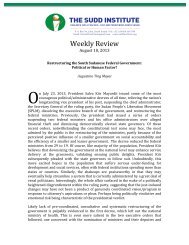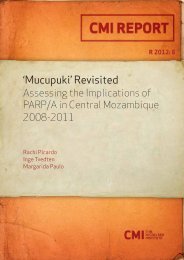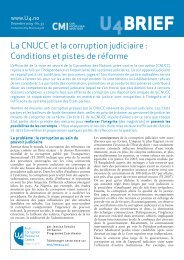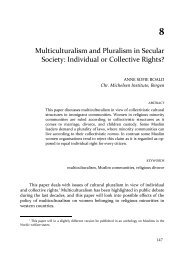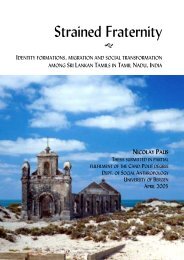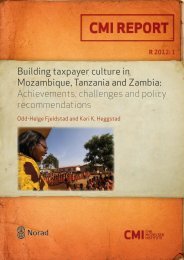Peacebuilding: Lessons for Afghanistan? - CMI
Peacebuilding: Lessons for Afghanistan? - CMI
Peacebuilding: Lessons for Afghanistan? - CMI
Create successful ePaper yourself
Turn your PDF publications into a flip-book with our unique Google optimized e-Paper software.
Preface to this edition<br />
From October 2001 major changes were taking place in <strong>Afghanistan</strong> resulting in the<br />
defeat of the Taliban regime and the eventual establishment of a new interim<br />
government with international support. Reflecting the importance of these events and<br />
the dearth of readily available background material <strong>for</strong> decision making, the<br />
Norwegian Ministry of Foreign Affairs on short notice commissioned the Chr.<br />
Michelsen Institute to produce two reports that would provide insights relevant to the<br />
extremely complicated peacebuilding process facing <strong>Afghanistan</strong>.<br />
The first report, submitted in January 2002, reviewed previous ef<strong>for</strong>ts by the<br />
international community within <strong>Afghanistan</strong> to address issues central to<br />
peacebuilding. On this basis, the report made several strong recommendations <strong>for</strong><br />
international support to the present phase of transition to peaceful reconstruction and<br />
development. The report became available just in time <strong>for</strong> the Tokyo conference on<br />
international assistance to <strong>Afghanistan</strong>.<br />
The second report, submitted in April 2002, reviewed a range of experiences in other<br />
countries relevant to the tasks of reconstructing the state and the economy in<br />
<strong>Afghanistan</strong>. Emphasis was put on the political framework <strong>for</strong> peacebuilding, security<br />
sector re<strong>for</strong>ms, and early economic recovery.<br />
While both reports have been circulated openly as Commissioned Reports and have<br />
been accessible at the <strong>CMI</strong> website, the two papers are joined here more conveniently<br />
as one <strong>CMI</strong> Report. The original text has not been changed, but the executive<br />
summaries and the bibliographies have been merged. Part I refers to the first report,<br />
while Part II refers to the second report. Some references in text may nevertheless still<br />
refer to the “first” and “second” report, rather that Part I and II.<br />
The first report (Part I) was prepared by Astri Suhrke, Kristian Berg Harpviken and<br />
Arne Strand, while the second report (Part II) was written by Astri Suhrke, Are<br />
Knudsen and Arve Ofstad. Astri Suhrke has also been overall responsible <strong>for</strong> these<br />
reports. We would like to thank the Norwegian Ministry of Foreign Affairs <strong>for</strong> the<br />
opportunity to work on these extremely important and challenging issues, and hope<br />
that the reports have been useful.<br />
Bergen, August 2002<br />
iv



